Oil Pulling Beyond Oral Hygiene: What Happened When We Tried The Ayurvedic Ritual For A Month
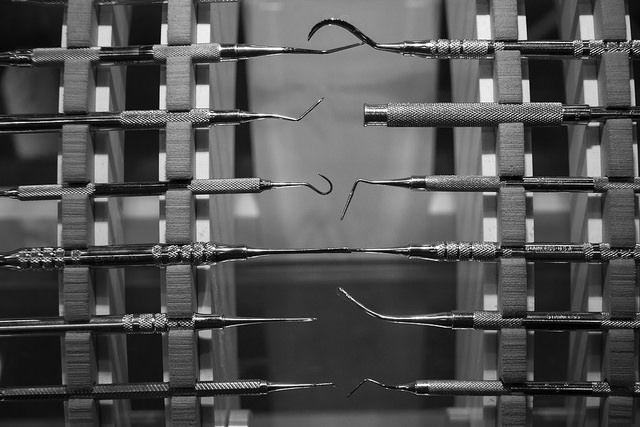
Every morning for one month, Medical Daily's Lizette Borreli and Samantha Olson took a mixture of sesame, sunflower, coconut, and mint oils, letting it splash against the insides of their cheeks while they went about their routine. This mixture came from a bottle of GuruNanda Pulling Oil, and each morning they'd pour themselves a couple tablespoons and swish away for five to 15 minutes.
Oil Pulling: The Ayurvedic Practice
Oil pulling is a 3,000-year-old ancient Ayurvedic oral hygiene practice that involves swishing or holding oils from plants and other natural sources in the mouth for long periods of time. Also called, “Kavala Graha” or “Gandusha,” oil pulling works by extracting oil-soluble toxins and bacteria from the mouth. After several minutes of swishing along the walls of the mouth and between the teeth, and drawing out these unwanted toxins and bacteria, the mixture is disposed from the body by spitting everything out into the sink or, in Samantha's case, the shower.
Oil Pulling, As Told By Samantha
It took a long time for me to get to my bathroom counter on the morning I first tried it, and upon putting the oil in my mouth, I immediately imagined it’s what vegetable oil tasted like — something I never imagined I’d be gargling. The thought alone made me shudder, and the first small swish in the mouth was all it took for me to spit it out. Then I climbed out of the shower, reluctantly poured myself another helping, and, to my surprise, I swished with success. As the days gave way to weeks, it quickly became an easy step in my morning routine. But I couldn’t help wondering what was going on inside of my mouth every day.

Swishing around a mouth full of oil may not be bad for you, but the jury is still out on whether or not it yields the benefits it claims. The American Dental Association even investigated the practice in 2014 because of its rapidly growing popularity and found there wasn’t enough evidence to provide a definitive answer to patients and fellow dental professionals. Oral health, however, isn’t the only potentially beneficial aspect of oil pulling brought into question.
In 2013, a study published in the Journal of Cardiovascular Disease Research revealed sesame oil’s ability to protect the heart with its high vitamin E and antioxidant content — it’s absorbed through the capillaries of the mouth into the bloodstream during oil pulling. Aside from heart health, oil pulling has also been said to reduce the risk of inflammation, osteoporosis, gastrointestinal diseases, lung disease, temporomandibular joint disorder (TMJ), skin conditions, sinus congestion, chronic fatigue, insomnia, and more.
Samantha's Results
A large, double-blind, peer-reviewed, randomized study — considered the gold standard of testing — is still necessary to prove to the public there’s a scientific reason to swish the viscous liquid each day. As for me, I have temporomandibular joint disorder and I didn’t feel any relief after a month of oil pulling. However, that’s not to say it didn’t work; my teeth were noticeably whiter and brighter. I went to the dentist for a routine clean up in the middle of the experiment and was told my teeth were in great, healthy order. Some benefits beyond the mouth I did find were that I had constantly clear sinuses and skin.
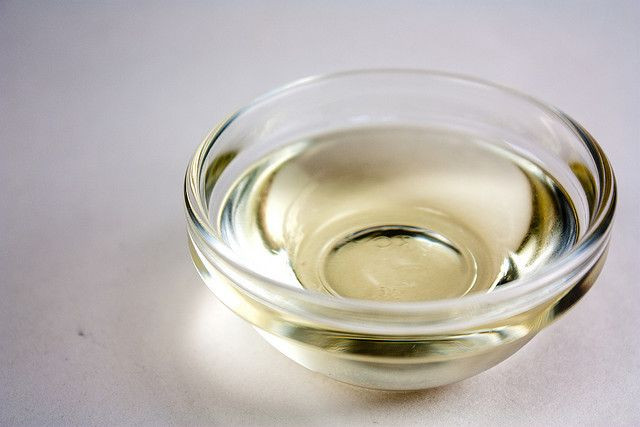
Would I continue to use oil pulling given the perceived benefits? Maybe once or twice a week, but 15 minutes a morning is excessive and time consuming, especially when those minutes could be spent enjoying a shower or hitting the snooze button once or twice more.
So, what did my coworker think of this 3,000-year-old practice?
This is her story:
Oil Pulling, As Told By Liz
When I hear the word "oil," I usually think of pouring it onto a pan, not into my mouth. So the idea of swishing this concoction of various oils in my mouth every morning for 15 minutes didn’t sit well. Despite my disdain for gargling oils every day for a month, I surrendered my oral health to the Ayurvedic ritual of oil pulling.
With anything new, I was anxious, nervous, and excited, even if it meant adding an extra 15 minutes to my morning routine. Half asleep and groggy (I'm obviously not a morning person), I made my way to the bathroom, jumped in the shower with my toothbrush and toothpaste, and then realized it was day 1 of my oil pulling challenge. I quickly pushed the shower door aside, poured a generous spoonful of GuruNanda’s Pulling Oil into my mouth and swished for three minutes. (I worked my way to 15 minutes by intervals of three every day.)
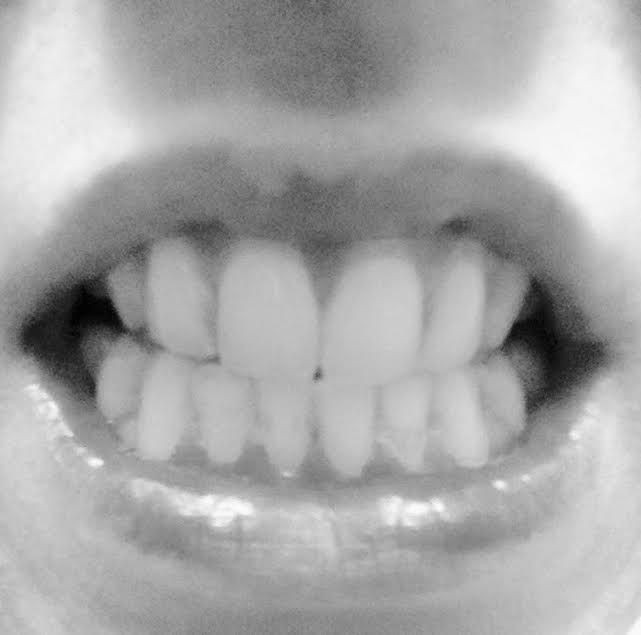
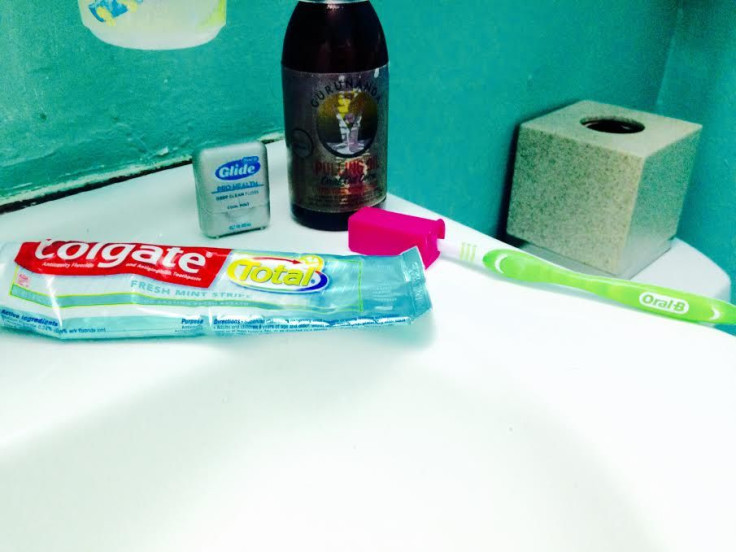
The moment I had the oil sitting in my mouth, I started to feel abdominal cramps. My insides were gnawing at me as I finally reached the three-minute mark and spit it out into the bathroom sink. Known as a detox reaction, or a “healing crisis,” the first few days of oil pulling are typically characterized by mild congestion, headaches, and mucous drainage — among other symptoms that occur before the body gets better.
Despite the unexpected (non-menstrual) cramping, I was happy to see a visibly whiter and brighter smile. Perhaps it was my bathroom lighting, a placebo effect, or me trying to convince myself this would be worth it.
My Results
By day 5, it became apparent swishing for 15 minutes wasn’t only difficult but also somewhat painful — my inner cheeks would become sore as if I'd been chewing gum for hours. However, I noticed my teeth were whiter and my plaque had seemingly vanished. I saw this before I had even brushed my teeth in the morning, and considering I’m someone who drinks copious amounts of tea and coffee, I was ecstatic to have found something that could aid in removing plaque.
Plaque is made up of colonized bacteria surrounded by fatty membranes, which are meant to attract similarly fatty compounds, such as those in coconut oil. Oil pulling therefore helps to loosen plaque from the surface of teeth, consequently leading to whiter, healthier teeth.
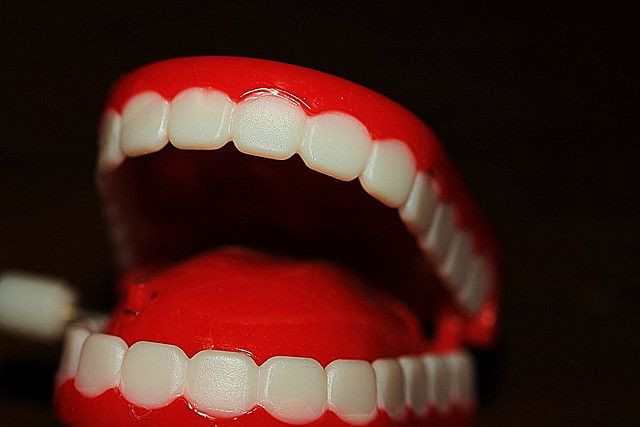
Oil pulling eventually became habitual, just like brushing my teeth or taking a shower every morning. I enjoyed swishing because I could see results — I would have been miserable and had no motivation to continue otherwise.
Overall, the month-long challenge gave me noticeably whiter teeth, less plaque buildup, and stronger gums. After brushing my teeth, I typically experience slight bleeding from my gums. Though my dentist hasn’t diagnosed me with any gum condition, Medline Plus reports this is caused by the buildup of plaque at the gumline, which can cause inflammation or even gingivitis.
However, when it came to oil pulling effects on other parts of my body, I wasn’t completely convinced. I didn't notice any significant differences when it came to headaches or skin health — granted, I don’t normally experience headaches. I do have oily, sensitive skin, however, but I didn’t see any noticeable changes.
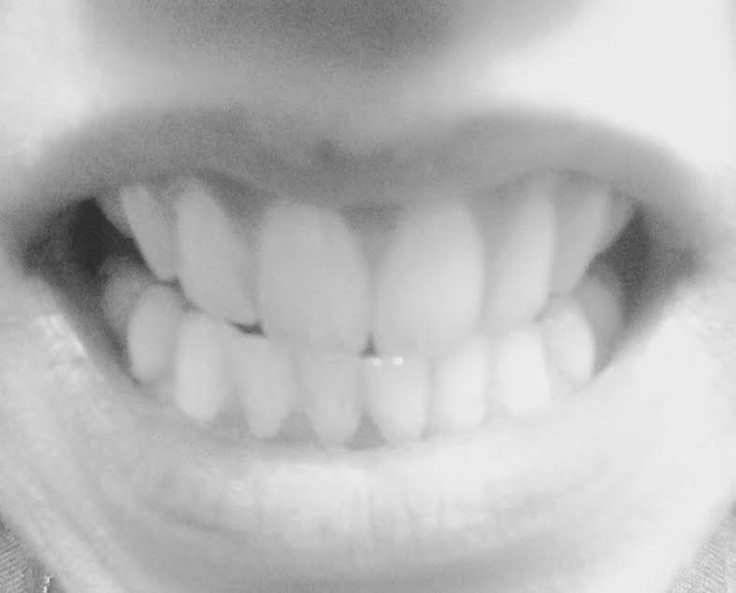
What the Science Says About Oil Pulling
Two studies in particular have investigated the effects of oil pulling on oral health. One from 2008 sought to determine how oil pulling with the addition of sesame oil affected Streptococcus mutans bacteria, a common contributor to tooth decay. Between an oil pulling group of kids and a group that used chlorhexidine mouthwash, the researchers found 10 minutes of swishing oil each day reduced bacteria in plaque and saliva significantly after one to two weeks. Similarly, a 2009 study comparing the effects of oil pulling on plaque-induced gingivitis found it did a better job than the aforementioned mouthwash in reducing plaque and gingival scores within 10 days.
The researchers of the 2008 study suggested oil pulling could be a good oral health aid, and it’s safe to say both Samantha and I believe oil pulling can be beneficial to teeth and gums. But when it comes to other effects on the body, the scientific evidence is totally murky — because it doesn’t exist.
Nevertheless, naturopathic doctor Bruce Fife told the Huffington Post that the detoxifying effect oil pulling has on the body can help reduce the appearance of skin rashes and other blemishes. "Removing bacteria and toxins from the body eliminates a great deal of stress that results in improved energy levels," he added.
Oil pulling has been proven most helpful for bad breath, gums, and stopping the growth of various bacteria. However, we shouldn’t be quick to say it's a cure-all for other conditions. Gargling the oils may help whiten and brighten your smile, but can it cure obesity? Probably not.
Like any health craze, it’s fun to see what works, but sometimes the results may not be worth the effort. As a relatively cheap teeth whitener, I’ll probably add it to my oral health routine when I have 15 minutes to spare. But like Samantha said, hitting the snooze button a few extra times sounds like a better alternative.
Published by Medicaldaily.com



























